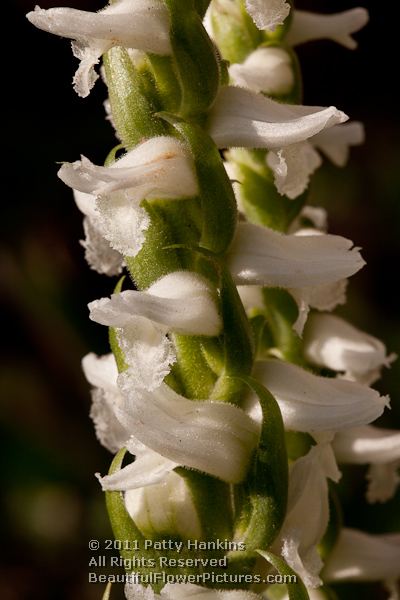
by hankinslawrenceimages | Dec 5, 2011 | Flowers, Orchidaceae Family, Wildflowers
For the first time – you get to see some photos of flowers from my garden!! I’m not known for my gardening abilities – in fact – I killed a butterfly bush. In the past couple of years, I’ve been adding more and more native plants into my garden. Not only are they well suited for my climate (so hopefully will require less babying) but they also attract lots of birds, butterflies and insects into my garden.
This spring, I planted a Ladies Tresses plant. Ladies Tresses are a native orchid – and are supposedly reasonably easy to grow. My guess is that mine are the Chadds Ford variety – which is one of the easiest to grow in gardens. Throughout much of the summer, it didn’t look very good – then all of a sudden a couple of weeks ago – it perked up and started to bloom!!! So here are photos of my Ladies Tresses!!
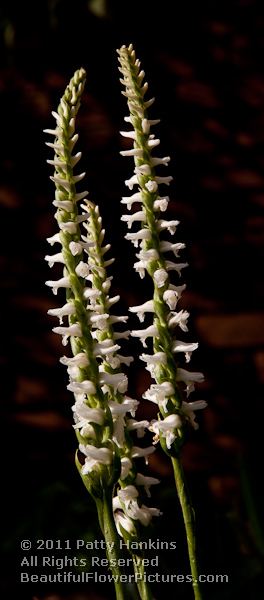 © 2011 Patty Hankins
© 2011 Patty Hankins
Ladies Tresses (Spiranthes odorata) is frequently the last native orchid to bloom each year. In the Washington DC area, it blooms in September and October. Further south, it can be found blooming as late as December. These lovely orchids are native to the Southeastern United States – their habitat ranges from New Jersey to Texas.
 © 2011 Patty Hankins
© 2011 Patty Hankins
Known also as Fragrant Ladies Tresses and Marsh Ladies Tresses, Spiranthes odorata grow to about 2 feet tall. Small white hooded fragrant blossoms are found on spiral stalks. The twisting of the stems is a result of uneven cell growth. They prefer to grow in moist boggy soil in partial shade. The ones in my garden are in partial shade and not very good soil.
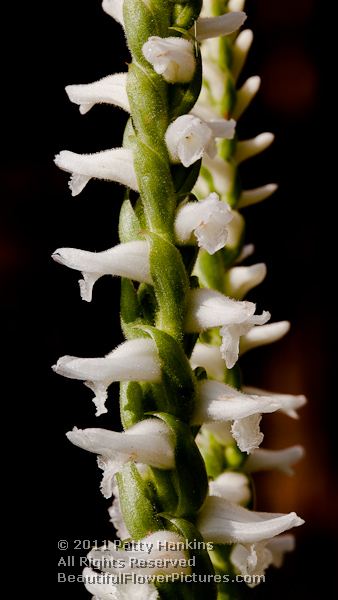 © 2011 Patty Hankins
© 2011 Patty Hankins
There are close to 300 species of Ladies Tresses worldwide – 25 species in North America. Some practical uses of the plants have been recorded. A European variety was used medicinally to treat eye, skin and kidney diseases. In Chile, a local species was used as a diuretic. Native Americans used it for everything from a blood purifier to a treatment for venereal diseases. The roots were sometimes used in charms for hunters or as food.
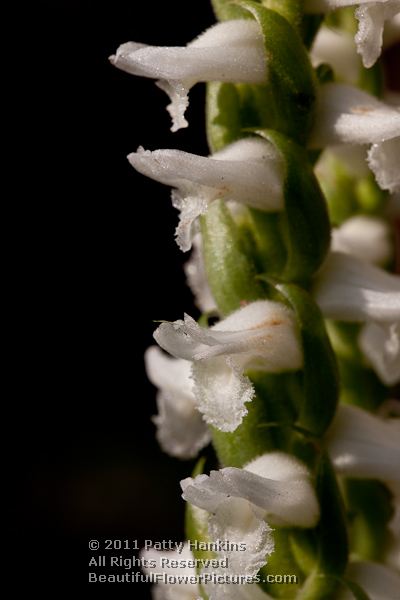 © 2011 Patty Hankins
© 2011 Patty Hankins
I hope you’ve enjoyed the photos of my ladies tresses. They did well enough this year that I may add another few ladies tresses into my garden next year!
If you’d like more information about ladies tresses, you can find some online at
Flora of North America
Kemper Center for Home Gardening
Lady Bird Johnson Wildflower Center
Native American Ethnobotany
USDA Plant Profiles
by hankinslawrenceimages | Nov 28, 2011 | Flowers, Montana, North Dakota, Photo Locations, South Dakota, Wildflowers, Wyoming
Several people have asked me how I was able to identify all the different wildflowers I photographed on my trip west – especially since this was my first time seeing all these wildflowers. The answer is actually pretty straight forward – I bought several reference books before I headed west – and bought a few more while I was in the various parks. I’ve found that by searching amazon for the state or park name and wildflowers I can usually come up with at least some basic reference books before I visit a new area. And then I always visit park bookstores and other local bookstores to see what else I can find. I literally have a shelf full of wildflower identification books – and I’m always looking to add new ones to my collection.

Here’s what I added to my collection as a result of my trip west – and I’m sure I’ll add a few more next year . . . (links go to the books on Amazon – they are provided for your convenience – they’re not affiliate links).
Common Plants of Theodore Roosevelt National Park – Robert L. Sisk and Jan Tysdal-Sisk – includes grasses, trees, shrubs and exotic plants in addition to the native wildflowers. I bought it at the park – and it’s the best guide I found for that area.
Common Wildflowers of Grand Teton National Park – Charles Craighead – a handy little book I bought at Grand Teton. It is an official guidebook of Grand Teton National Park. There are several books in the series including Day Hikes and Short Walks of Grand Teton National Park, Wildlife of Grand Teton National Park and History of Grand Teton National Park. There may be others in the series – these are the ones I brought home with me. These books aren’t available on Amazon – you can order them directly from the Grand Teton Association website.
Tallgrass Prairie Wildflowers – Doug Ladd and Frank Oberle – includes wildflowers of the Prairie Midwest – so east of the parks I visited on this trip. It covers from eastern Manitoba – south to northeastern Oklahoma – east to western Tennessee and north to western Ohio. It’s my first book on wildflowers of this region – now I just need some parks to go visit so I can start finding these wildflowers to photograph.
Wildflowers of Glacier National Park and Surrounding Areas – Shannon Fitzpatrick Kimball and Peter Lesica – my favorite book for the wildflowers I found in Glacier National Park. The flowers are organized by color – which always makes it easier for me to identify wildflowers I find and have no clue what family they belong to.
Wildflowers of Grand Teton and Yellowstone National Parks – Richard J. Shaw – my favorite book for Grand Teton and Yellowstone. Organized by color, has the most common wildflowers and nice and light so easy to toss into my backpack.
Wildflowers of Montana – Donald Anthony Schiemann – includes 350 wildflowers in the mountains, plans and forests of Montana
Wildflowers of the Western Plains – Zoe Merriman Kirkpatrick – includes 186 species native to the western plains stretching from western Texas and eastern New Mexico in the south to Canada in the north.
Wildflowers of Wyoming – Diantha and Jack States – I got my copy for about $ 20 – no clue why the only copy listed on Amazon is on sale for over $ 900!!! It’s a good book – but I’m sure you can find a more reasonably priced copy elsewhere on the web is it’s still this overpriced on Amazon.
Since I’m planning on heading back to these areas again next year – do you have a favorite wildflower guide for the region that I should add to my collection before I go? If you know of any – please let me know. Thanks 🙂
by hankinslawrenceimages | Oct 31, 2011 | Flowers, Wildflowers
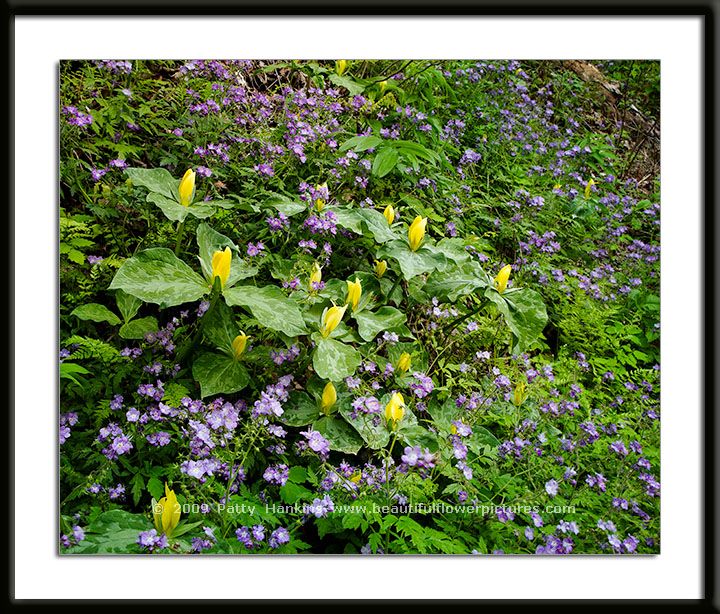
Yellow Trillium & Purple Phacelia © 2009 Patty Hankins
I love photographing wildflowers – especially in the spring. For the past several years, I’ve spent part (if not most) of the month of April in Tennessee and North Carolina in what can only be described as the most beautiful place on Earth for wildflowers. Be it alongside the road or under a tree, it seems that whereever you look is another wildflower waiting to be discovered and photographed.
The combinations of colors, shapes and textures have to be seen to be believed. I took this photo of the Yellow Trillium (trillium luteum) and Purple Phacelia (phacelia bipinnatifida) quite literally along the side of the road in the Great Smoky Mountains National Park three years ago. It has the wonderful combination of the triangles in the trillium and the rounded edges of the phacelia. The complementary shades of yellow and purple bring additional balance to the scene, while the pattern of the trillium draws you into the scene.
It’s not just the beauty that attracts me to the wildflowers – spending time among the flowers brings me an incredible sense of peace and connection with the greater natural world. Not only do I see the flowers – but also the settings where they are. I’m often photographing in the mountains, or alongside a stream. I can hear the birds singing in the trees, the insects buzzing, and the wind rustling through the leaves. I also know that the amazing colors and shapes serve the purpose of attracting just the right pollinator to the flowers to ensure the future of the species.
When I’m out photographing wildflowers people often stop and ask me what I’m photographing. They are so used to looking for the big wildlife or grand landscapes – that they don’t think to look down at their feet to see what’s growing. As I was photographing the trillium and phacelia, two people asked the inevitable question that people seem to ask when they see a photographer with a tripod the park – “Is there a bear?” Umm – no. Given how short of a lens I was using and how close I was to my subject – if I had been photographing a bear at that particular moment – I could easily have been his next meal!
So next spring – whether you are photographing locally at Turkey Run Park or in the Smokies – I hope you’ll take a few minutes to check out the wildflowers. You might find some wonderful subjects to photograph.
This post first appeared as a guest post on the Nature Visions blog earlier this month. If you live in the DC area, I hope you’ll consider attending the 2011 Nature Visions Conference on November 11 – 13.
by hankinslawrenceimages | Sep 26, 2011 | Flowers, Lamiaceae Family, Photo Locations, Texas, Wildflowers
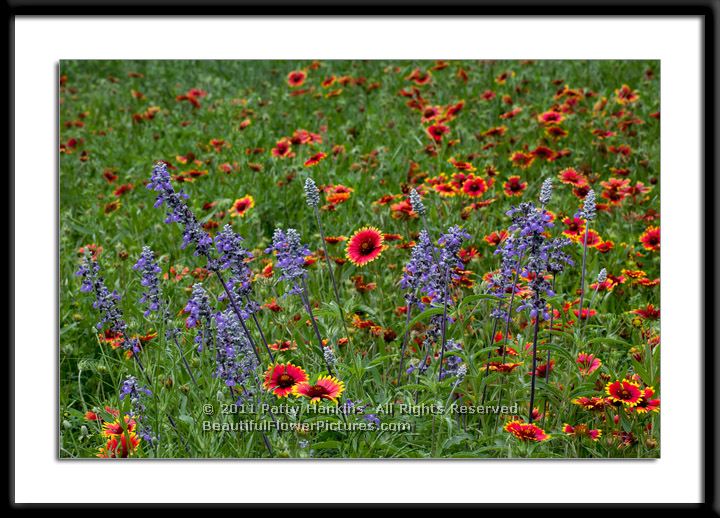
Salvia & Blanketflowers © 2011 Patty Hankins
The Salvia’s are a very colorful diverse member of the Mint (Lamiaceae) family. While I was in Texas earlier this year – I had the opportunity to photograph Engelmann’s Salvia (salvia engelmannii) – which is native only in Texas. When I was photographing these wonderful purple and white flowers – I had no idea that Texas was the only state they grew in – so I’m very glad I spent time photographing so many of them.
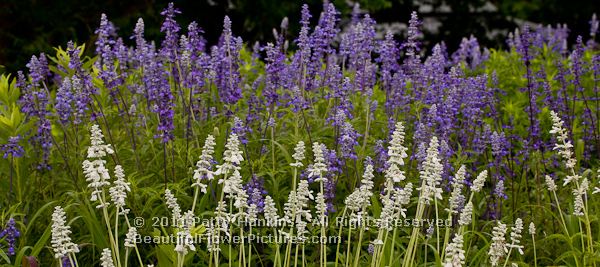
© 2011 Patty Hankins
Engelmann’s Salvia is named in honor of Georg Engelmann (1809-1884). Born in Germany, Engelmann immigrated to the United States in the 1830s where he practiced medicine. After developing an interest in botanical studies, Engelmann became well-known for his studies including work on identifying cactuses and vines. Engelmann’s reserach on grape vines played a major role in preserving the French wine industry when many vineyards in France were infested with Phylloxera vastatrix, a small insect. Engelmann identified varieties of native to the US grape vines that were resistant to Phylloxera vastatrix and arranged to have millions of shoots and seeds shipped to France.
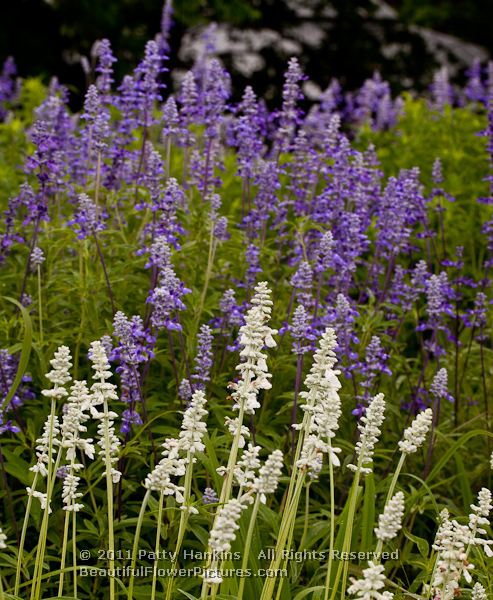 © 2011 Patty Hankins
© 2011 Patty Hankins
Engelmann’s Salvia blooms in the spring. It grows to about 2 feet tall with a single spike of flowers on each stalk. It is also known as Engelmann’s Sage
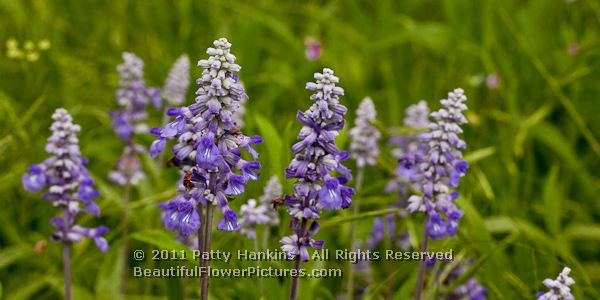
© 2011 Patty Hankins
More information about Engelmann’s Salvia can be found at the Lady Bird Johnson Wildflower Center and the USDA Plant Profiles
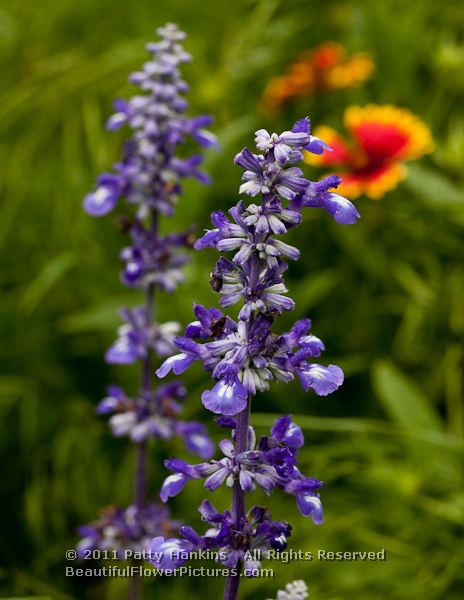 © 2011 Patty Hankins
© 2011 Patty Hankins
by hankinslawrenceimages | Sep 21, 2011 | Flowers, Photo Locations, Uncategorized, Wildflowers, Wyoming

© 2011 Patty Hankins
One of my favorite wildflowers I discovered my trip to Yellowstone National Park in June was Prairie Smoke (Geum Triflorum). When I first spotted it – I had no clue what it was – but I knew I wanted to take lots of photographs of it. I couldn’t remember ever seeing a wildflower with the combination of uniquely shaped flowers, fuzzy texture and fascinating leaf structure that reminded me of antlers.
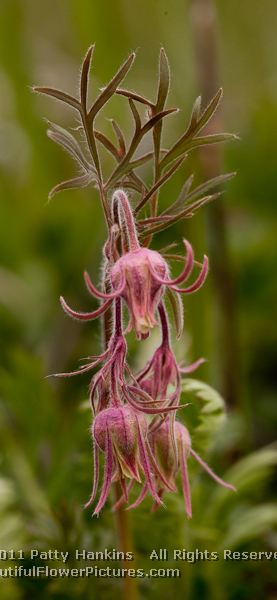 © 2011 Patty Hankins
© 2011 Patty Hankins
Prairie Smoke, also known as Old Man’s Whiskers and Purple Avens, is a member of the Rose family. Native to much of the Northern and Western United States and Canada, this wonderful wildflower grows to about 18″ tall. It is easily identified by it’s bell shaped fuzzy reddish-purple flowers. After pollination, the flowers turn upward to aid dispersal of the seeds. The flowers are less than 3/4″ wide. The leaves are up to 7″ long and divided into multiple tooted segments.
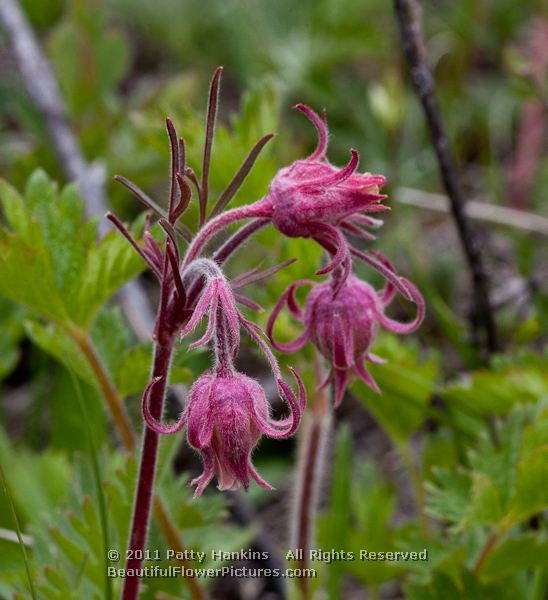 © 2011 Patty Hankins
© 2011 Patty Hankins
Prairie Smoke grows easily in many different ecosystems. It can adapt to dry, moist or wet soil – sun, partial shade or full shade. It is often found growing in open woods, mountain meadows and grassland prairies.
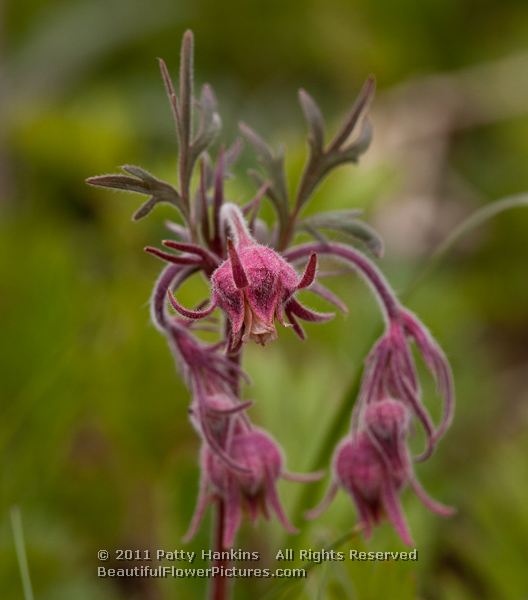 © 2011 Patty Hankins
© 2011 Patty Hankins
Many Native American tribes used Prairie Smoke for medicinal purposes. It was used to treat wounds and coughs. An infusion of the roots was often used to treat sore eyes. It was often given to horses as a stimulant before a race. and the seeds were used to create purfume.

© 2011 Patty Hankins
Prairie Smoke can be grown from seeds or from a division of the rhizome. For the rhizome method of propogation the plants should be split and planted in early spring. Seeds should be collected in late summer, stored for the winter, and then planted in the spring.
More information about Prairie Smoke can be found online at
Burke Museum of Natural History & Culture
Kemper Center for Home Gardening
Lady Bird Johnson Wildflower Center
Michigan Natural Features Inventory
Native American Ethnobotany
Native Plant Network
USDA Germplasm Resources Information Network
USDA Plant Profiles
















